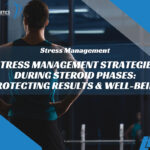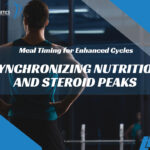Introduction: The Unsung Role of Calcium in Steroid Cycles
When people think of anabolic performance, the focus usually lands on muscles, testosterone, and recovery speed. But beneath every rep, lift, and sprint, there’s a silent structural hero—calcium. In the world of Calcium Steroids, this essential mineral takes center stage, acting as the foundation of skeletal strength and cellular performance.
Anabolic steroids are known for increasing muscle mass and density, but they also place greater mechanical and hormonal stress on the bones. Without adequate calcium intake and absorption, even the most powerful steroid cycle can lead to imbalances, joint discomfort, or long-term skeletal weakening.
At Bio Genetics USA, we emphasize complete cycle optimization—from hormonal support to micronutrient balance. Understanding how calcium interacts with steroids helps athletes fortify their foundation, ensuring their performance gains are not just powerful, but sustainable.
For those new to enhanced training, it’s vital to start with proper Cycle Preparation to build a body capable of handling these transformations safely.
The Science: How Steroids and Calcium Interact
When most athletes think about steroids, they often focus on muscle mass, testosterone levels, or performance—but few consider the vital role of calcium in that equation. Calcium isn’t just a bone-building mineral; it’s also an electrolyte, a cellular messenger, and a regulator of muscle contraction, influencing nearly every part of your body’s performance system.
When anabolic steroids enter the body, they don’t just change your hormones—they also influence how calcium is absorbed, stored, and used. This interaction can lead to both positive adaptations (like denser bones and stronger contractions) and potential risks (like calcium depletion or bone fragility over time). Understanding how calcium and steroids interact gives athletes a smarter, more holistic approach to performance and health.
1. Increased Bone Turnover and Density
One of the most beneficial effects of anabolic steroids is their ability to stimulate osteoblastic activity—the process through which new bone tissue is formed. Steroids enhance protein synthesis and mineral deposition within the skeletal system, increasing bone mass and density. This helps athletes handle heavier loads, absorb greater impact forces, and recover faster from intense training sessions.
However, there’s a catch: this process requires a higher-than-normal intake of calcium and Vitamin D3. When your body doesn’t get enough calcium from food or supplements, it begins to pull calcium from existing bone stores to maintain blood calcium levels. Over time, this can weaken your bone matrix, leaving you more vulnerable to stress fractures or joint pain—ironically, the very issues many athletes use steroids to overcome.
A calcium-rich diet (including dairy, leafy greens, and fortified foods) and proper supplementation can prevent this depletion and support long-term skeletal integrity.
2. Hormonal Influence on Calcium Absorption
An often-overlooked aspect of steroid metabolism is its impact on hormonal regulators like parathyroid hormone (PTH) and calcitonin, both of which control how calcium moves through your body.
- Increased PTH Levels: When dietary calcium is low, PTH signals your bones to release stored calcium into the bloodstream. During steroid cycles, fluctuating hormone levels can exaggerate this effect, increasing calcium loss from bones.
- Reduced Calcitonin Activity: Calcitonin helps retain calcium within the skeleton, preventing bone resorption. Steroid-induced hormonal imbalances can suppress calcitonin, reducing calcium retention and gradually weakening bone structure.
These shifts mean athletes on steroids need consistent, steady calcium intake—alongside cofactors like magnesium, Vitamin D3, and Vitamin K2—to maintain optimal bone health. Magnesium supports absorption, while K2 directs calcium into the bones rather than soft tissues like arteries.
3. Muscle Contraction and Athletic Performance
Calcium doesn’t just strengthen your bones—it’s the spark that ignites every muscle contraction in your body. Inside your muscle cells, calcium ions interact with actin and myosin, the proteins responsible for contraction and movement.
Under steroid-enhanced training conditions, your muscle fibers grow denser, your contractions become stronger, and your nervous system fires more efficiently. But this elevated performance comes with an increased demand for calcium. When your calcium reserves can’t keep up, you may experience:
- Muscle cramps or spasms due to improper ion exchange.
- Fatigue from inefficient contraction cycles.
- Reduced coordination or slower recovery between sets.
Maintaining adequate calcium intake ensures smooth, explosive muscle contractions and supports neuromuscular efficiency—a cornerstone of peak athletic performance.
4. Corticosteroids vs. Anabolic Steroids: The Calcium Contrast
It’s important to distinguish between anabolic steroids (used for muscle growth and performance) and corticosteroids (prescribed for inflammation and injury recovery). While anabolic compounds can increase bone density, corticosteroids like prednisone have the opposite effect—they reduce calcium absorption in the gut and increase calcium excretion through urine, leading to potential bone loss.
This is particularly concerning for athletes who use corticosteroids during injury recovery or anti-inflammatory therapy alongside anabolic cycles. The combination can create a calcium deficit that weakens bones over time.
To counter this, ensure your recovery stack includes:
- Calcium (1,000–1,200 mg/day) from food or supplements.
- Vitamin D3 (1,000–2,000 IU/day) for absorption.
- Vitamin K2 (100–200 mcg/day) to keep calcium in the right places.
- Magnesium (300–400 mg/day) to regulate muscle and nerve function.
When balanced properly, these nutrients protect against corticosteroid-induced bone loss while enhancing the anabolic benefits of your primary cycle.
The Takeaway: Balance Is Power
Steroids amplify everything—muscle growth, metabolism, and cellular activity—and calcium is no exception. When managed intelligently, this relationship can lead to stronger bones, better muscle coordination, and more efficient recovery. But when neglected, it can open the door to hidden risks like mineral imbalance, joint stress, and bone fragility.
The key to success lies in awareness and preparation. By supporting your cycle with proper calcium intake, hormonal balance, and nutritional cofactors, you protect your foundation and sustain long-term performance.
At Bio Genetics USA, we promote enhancement through education, balance, and science-backed supplementation—because real strength isn’t just about how much you lift, but how well your body supports it.
Why Calcium Is Crucial During Steroid Cycles?
The stronger your muscles become, the greater the mechanical load on your skeleton. Calcium acts as the structural buffer that prevents fractures, micro-tears, and mineral depletion.
1. Bone Reinforcement Under Stress
Heavy resistance training while on steroids accelerates bone remodeling—the continuous process of breaking down and rebuilding bone tissue. Sufficient calcium ensures your bones stay dense, flexible, and able to adapt to rapid muscle growth.
2. Hormone Balance and Recovery
Calcium also supports adrenal and pituitary function, indirectly influencing hormone regulation. Stable calcium levels improve mood, sleep quality, and recovery—all vital for maintaining equilibrium during high-intensity cycles.
3. Muscle Contraction Efficiency
Without calcium, your muscles can’t contract properly. Low calcium levels can cause twitching, spasms, and fatigue—symptoms often misattributed to dehydration or overtraining. Maintaining balance allows smoother, stronger contractions and sustained power output.
4. Cardiovascular Support
Steroid cycles can sometimes alter blood pressure and electrolyte balance. Calcium helps regulate vascular tone and heart rhythm, reducing cardiovascular stress when combined with Omega-3 fatty acids and magnesium.
Calcium Synergy: The Perfect Micronutrient Team
Steroids increase metabolic demand, so calcium works best when combined with complementary nutrients that improve absorption and utilization.
| Nutrient | Role in Bone and Muscle Health | Best Food Sources |
| Vitamin D3 | Enhances calcium absorption in intestines | Sunlight, salmon, egg yolks |
| Vitamin K2 | Directs calcium into bones instead of arteries | Cheese, eggs, natto |
| Magnesium | Prevents calcium crystallization and supports muscle relaxation | Nuts, seeds, spinach |
| Zinc | Essential for collagen formation in bone tissue | Meat, pumpkin seeds, lentils |
| Boron | Improves bone mineral density and testosterone metabolism | Avocados, apples, walnuts |
These nutrients work synergistically to ensure that calcium strengthens bones rather than accumulating in soft tissue or blood vessels.
Common Signs of Calcium Deficiency on Steroid Cycles
Even athletes with disciplined diets can experience calcium depletion when running intensive cycles. Watch out for these warning signs:
- Muscle cramps or spasms during training
- Fatigue or sluggish recovery despite good sleep
- Joint aches or mild bone tenderness
- Tingling sensations in fingers or toes
- Elevated heart rate during light exertion
If you notice these symptoms, increase calcium-rich foods (like dairy, sardines, and fortified plant milks) or consider a calcium-magnesium-Vitamin D3 supplement to restore balance.
Safe Supplementation and Dosage Tips
For athletes on anabolic steroids, the goal is to maintain optimal calcium levels, not overload them. Excess calcium can interfere with magnesium absorption or cause calcification if Vitamin K2 is insufficient.
Recommended Guidelines
- Calcium (1,000–1,200 mg daily): Divide into two doses for better absorption.
- Magnesium (300–400 mg daily): Helps balance calcium’s muscle effects.
- Vitamin D3 (1,000–2,000 IU daily): Crucial for calcium metabolism and immunity.
- Vitamin K2 (100–200 mcg daily): Directs calcium to bones and away from arteries.
Consistency is key—supplementing these nutrients daily throughout your cycle and post-cycle therapy supports skeletal integrity and recovery.
The Bio Genetics USA Perspective: Build From the Inside Out
At Bio Genetics USA, we go beyond surface-level enhancement. True performance means building a resilient body from the inside out, and that starts with strengthening your foundation—your bones, joints, and cells.
Our performance philosophy combines scientific precision with responsible enhancement, empowering athletes to grow stronger while staying healthy. Calcium isn’t just a mineral; it’s an essential part of your anabolic success story.
Conclusion: Strong Bones, Strong Performance
The power of steroids lies not just in muscle gains, but in how well your body can sustain them. Calcium acts as your body’s stabilizer—keeping your bones dense, your muscles contracting efficiently, and your recovery smooth.
Ignoring calcium during steroid use is like building a skyscraper without reinforcing the foundation—it may stand tall temporarily but risks collapse under pressure.
Fuel your potential wisely. Build your performance from the ground up with proper calcium intake, nutrient synergy, and preparation—and let Bio Genetics USA guide you toward a stronger, more resilient physique.
👉 Reinforce your performance today—visit Bio Genetics USA Shop for trusted supplements that support your body from cell to bone.






